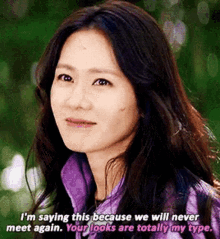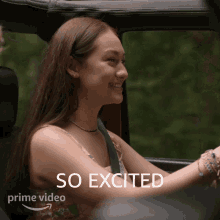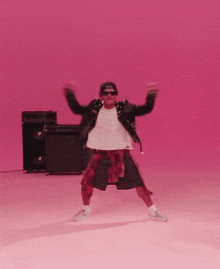A Prelude to the Illusion of Humanity and Violence of Shakespeare
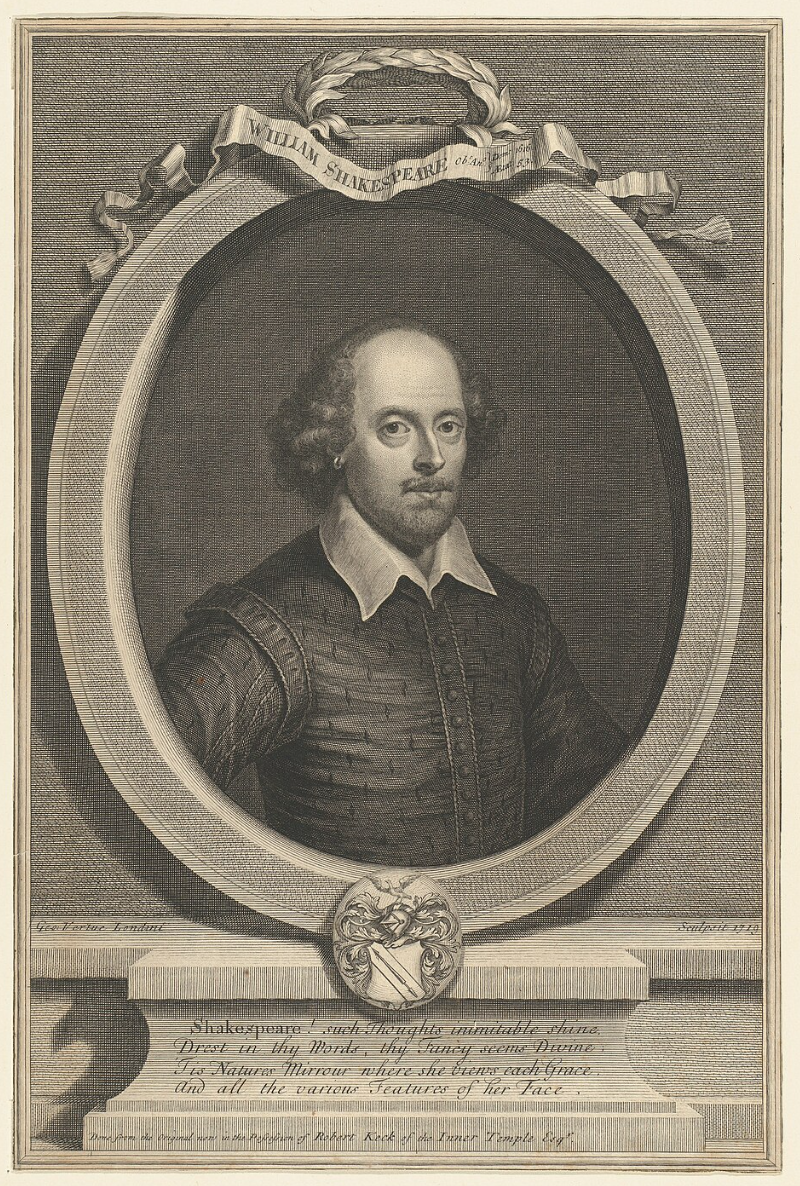
From Wikipedia Commons and etched by John Taylor
To many, humanity symbolizes the capacity for goodness, typically in the traditional human moral framework, and that illusion alone is enough for people to cling to an archaic hope. If today is not great, then at least there is the off chance that tomorrow will be. But have you really stopped to peer into the past--back through written records, and old texts? What do you find when you look, or more so when you question?
Given humanity's track record, I imagine the illusion begins to deteriorate. Beneath it lies reality: a slaughterhouse of sorts where atrocity runs rampant, subjugation is essential, and oppression is not an exception, but rather a guiding principle.
The human bid for supremacy manifests itself in many forms: the individual, the generation, to name a few. But what happens when the idea of control transcends the borders created by human constructs—when it becomes the supremacy of an entire species, cloaked in the language of exceptionalism?
At its core, it is not so different from all the others: it still requires an inferior, an other, something filthier, lesser. But species supremacy stands apart in one critical way: its normalization. It is so deeply ingrained within the assumption of humanity, it passes as common sense, as a known fact.
Nowhere is this phenomenon more self-evident than in language.
Consider these phrases:
- “You eat like a pig.”
- “As graceful as a swan.”
You may ask, how are these phrases related? Is their connection just the use of animalistic, figurative language?. Perhaps, but not entirely. Each phrase controls a narrative and its component parts: its meaning, its tone, and its image. They do not just manipulate words or letters, but also the body behind the composition.
These expressions reduce the animal to metaphor, stripping them of their own value to serve human meaning. In doing so, language becomes a tool for domination. The animal is turned into a vessel for judgment, and in doing so, human bodies become objectified by association. To put it simply, humanity’s defining trait is not any supposed moral superiority, but rather its ability to enslave.
Such conclusions, however, are rarely embraced. Instead, they are dismissed as anti-humanist delusion or cynical musing, best left in the realm of the philosophical, certainly not the real world. But one only needs to turn to language to find evidence.
And if modern language feels too slight, too ephemeral, too day-to-day, then look elsewhere: to Genesis. To Rumi. To Shakespeare. Especially Shakespeare: a mysterious figure shrouded in what many deem high literature. To most, he was the greatest author in Europe. To me, he is something else entirely: an enslaver of language and bodies for his tragedies and others' entertainment.
In Othello, the Moor is the plot device, and Desdemona is a mere addition to it. In the background, the animal remains the omnipresent other, and the human, the omnipresent great.
The language is one of control, inviting you, as all people do, whispering: let me show you what I can do. Let me show you the bodies I keep here.
A Black man.
A woman.
A ram.
A Guinea hen.
What does it matter?
Let us slide into your dms 🥰
Get notified of top trending articles like this one every week! (we won't spam you)Human Supremacy and the Non-Human Other
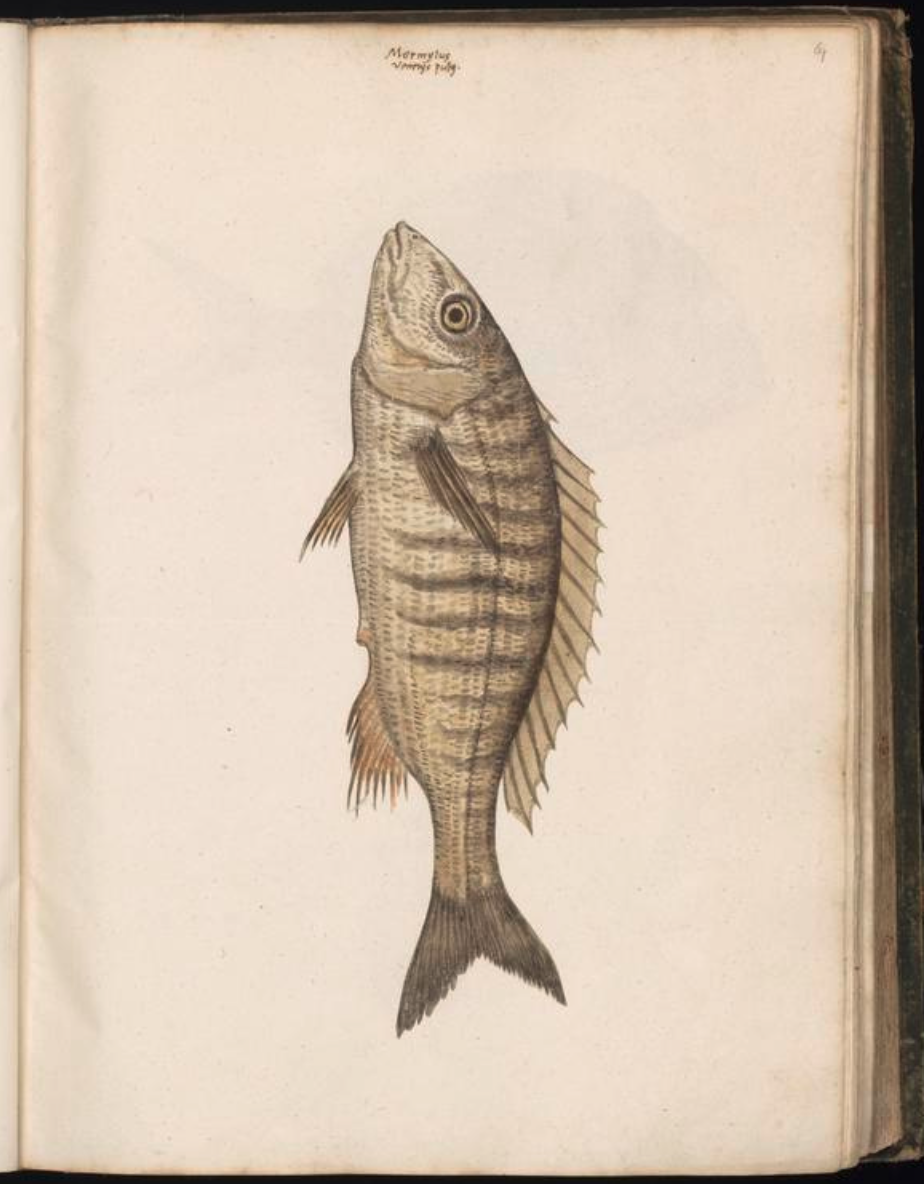 From Wikipedia Commons and photographed by Felix Platter
From Wikipedia Commons and photographed by Felix Platter
Have you ever noticed how Shakespeare uses animal language in Othello? If you have ever read it, whether in class or on your own, you probably have. Usually, people discuss this animalistic language as a way to highlight the other, especially along racial lines. However, this language does more than other based on race or gender; it reveals a pattern, almost unconsciously: the routine objectifying of the animal as a tool to sustain human hierarchies and the simultaneous elevation of human beings as something divine.
High school and college literature classes often discuss figurative language and how it shapes the understanding of a text. But in this case, figurative language goes beyond being just a literary device; it reflects a kind of mastery, a drive to dominate that says more about what it means to be human than any ideas of goodness or morality ever could, whether traditional or not.
The formal word for this idea of “human superiority and centrality” (Joy & Weitzenfield 5) is anthropocentrism.
The worldview is built on the idea that humans can assign non-human beings value based on how "useful" they are to human needs and interests. If some being does not serve a purpose for us, we tend to strip them of value altogether (Heuberger 95).
Anthropocentrism, as a way of thinking, is rarely spelled out directly. Instead, it passes down through generations, building in language and culture, ultimately manifesting in what we think of as normal. Over time, it shapes values that feel essential to society, even though they are often built upon arbitrary, harmful assumptions.
One of those values is beauty.
Have you ever called a rat ugly?
Why? And have you ever thought about why a swan isn’t?
We tend to mythologize the rat as vilified, grotesque, ugly, and ultimately inferior.
Meanwhile, the swan remains romanticised, elegant, and ultimately superior.
This distinction in the beauty binary does more than reflect aesthetic judgement; it reinforces a hierarchy in which humans are the sole judges of what is moral and what is not, consequently becoming unchecked dictators over their environment--empowered to impose their fictional constructs through exploitative and even violent means.
Here, the theme resurfaces: it is not inherent goodness that defines humanity, as many claim through a perceived, collective morality, but rather subjugation, oppression, and—at its core—violence. And what I am talking about so far is only the passive use of the animal. The active side, the ways we intentionally dominate animals and, by proxy, humans, is far worse.

Take the Quiz: Which Harry Potter Character Are You?
Find out which character matches your personality!
The Animal as a Historical Human Metaphor
Consider, for example, the Rwandan massacre, during which the Tutsi population was systemically dehumanized through metaphors likening them to "cockroaches," and "snakes” (Smith 416-417), illustrating the Hutu's sense of superiority over them. The vilifying of the Tutsi through language was not incidental; it was intentional, instrumental even in establishing the Tutsi as the other, and not just any other but a subhuman other.
Once classified this way, the Tutsi could be stripped of their humanity and rendered as killable because they were everything the Hutu positioned themselves against.
What emerges here is a pattern: animalization as the precursor to domination, regardless of whether it is of an entire species or a particular social group. To be human is to occupy the highest status in existence by any living being, and to be deprived of such a status is a fate worse than death.
Animalistic Language in Othello Part I: Race-Based Othering
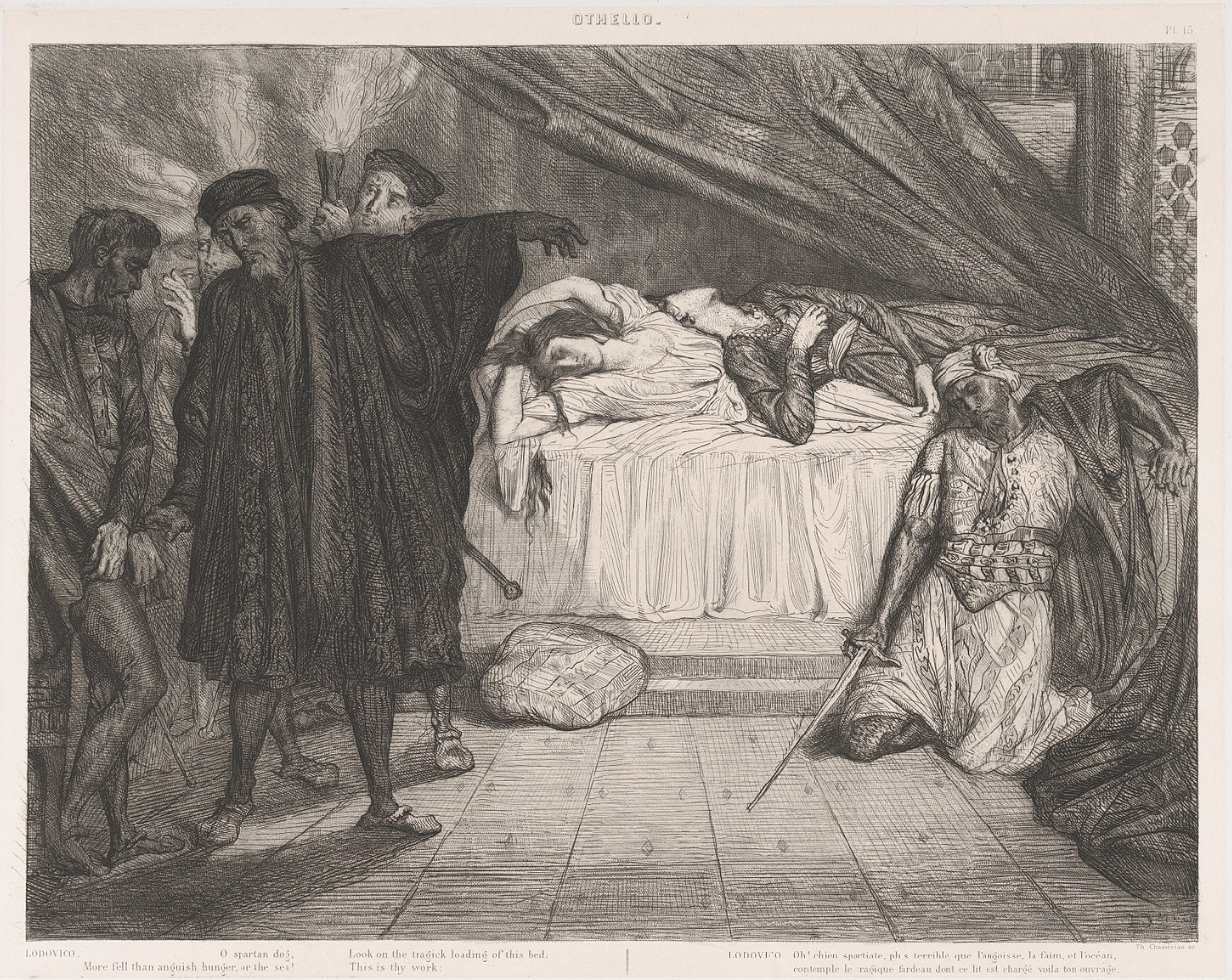
From Wikipedia Commons and etched by Théodore Chassériau
Let's return to my previous statement discussing how Othello does more than other based on race and gender, to focus specifically on race.
In the play, Iago uses animalistic language to racially other Othello, with one of the most prominent examples describing Othello as an "...old black ram..." and Desdemona, in comparison, as a "...white ewe..." (1.1.97-98). Here, Iago, yes, suggests that Othello is impure and less desirable compared to Desdemona because of his skin color, but also establishes a human-animal hierarchy where the ram, representing Othello, is positioned as lower than the ewe, representing Desdemona.
The perception that Othello occupies a lower, less human status compared to a white individual is reinforced, thereby emphasizing Othello's otherness. Iago's intentions suggest that the comparison serves not only as an insult but also reflects his belief in humanity's ability to establish hierarchies between humans and non-human beings and to establish their order based on prejudice.
By doing so, Iago places himself at the top of this hierarchy, one that is not only racial but also anthropocentric and even moral. As he defines who is a human and who is not, he assumes a divine-like status to determine morality itself. Morality, usually tied to notions of "good" or "evil", is here revealed as a construct—one that Iago manipulates to suit his worldview.
Rather than embody some universal morality that many claim exists, Iago’s version of morality puts on display the human capacity to create ethical codes that allow for othering and oppression through varying forms of violence. This is evident again when Iago refers to Othello as a “Barbary horse” (1.1.124-126), invoking both savagery and sexual primitivism of Othello through racialized imagery. In doing so, Iago states that Othello is not a primitive, savage human driven by animalistic urges but rather a primitive, savage subhuman.
Othello is dually othered: first through race, then through species. In this way, Iago’s language not only racializes and dehumanizes Othello but also objectifies the animals used in the comparison, revealing the intersection of racist ideology and anthropocentric thought. Taken together, these comparisons indicate another hierarchy that needs to be added to the picture.
While Iago has a more physical hierarchy that allows him to control bodies through language, he also has more ideological hierarchy in which he, like many other humans, believes themselves to be, is the judge of morality.
Thus, the question is raised: why is humanity so often defined by an alleged, collective capacity for goodness, when morality itself is a construct, flexible, and entirely human-made? If morality can be shaped to serve any end, then it is not inherent goodness that defines humankind, but rather the capacity to subjugate, oppress, and other in the name of that morality.
Animalistic Language in Othello Part II: Gender-Based Othering
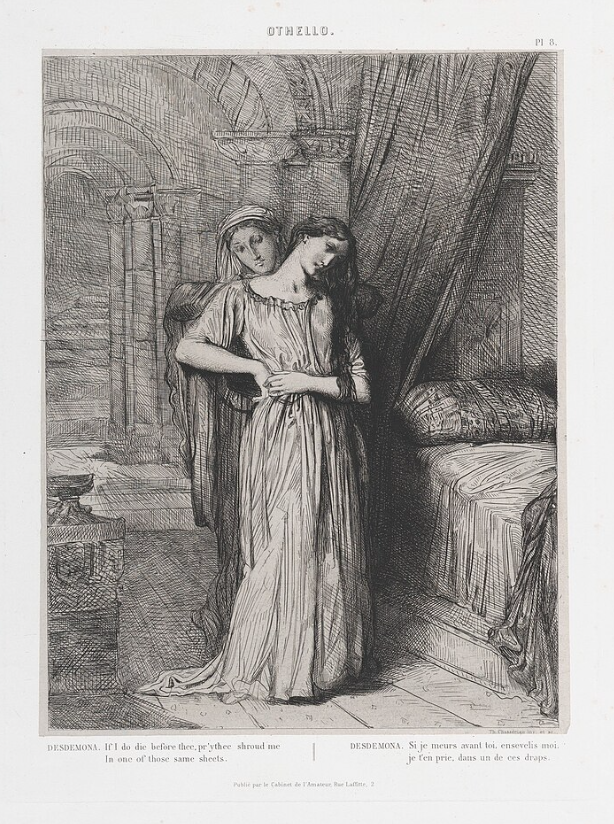
From Wikipedia Commons and etched by Théodore Chassériau
Is Othello then the victim, here, or is he too complicit?
Is Iago then the only "villain"?
Iago does other not only based on race, but also based on gender, and again by species, providing further support for the conclusion that he may be the "villain". In particular, Iago's comparison of women to “guinea hens” (1.3.356-358), which might appear trivial at first as a mere insult, functions as an act of violent reduction, intended to strip women of their autonomy and amplify their status as objects of subservience by linking them to non-human beings.
The non-human, seen as lesser, becomes a metaphor for womanhood, and thus women are doubly othered: by their gender and by their equation to the animal, a voiceless category of inferior beings. The worth of women in this play, like animals, is measured not by their agency but by their perceived purity, silence, and ability to fulfill the desires of men.
However, Othello is also complicit in this gender-based othering with roots in anthropocentric thought.
Othello goes as far to state that he would “rather be a toad” (3.3.311-313), implying that he would forfeit the prize of being a man, a human, to embody a creature, just to distance himself from Desdemona, who he has begun to view not as a human equal but as a tainted possession. His language reveals that to occupy the same moral plane as a woman accused of sexual impurity is more degrading than becoming a non-human other.
Even Othello, himself a victim of Iago’s racialized targeting, engages with this idea of ownership by degrading Desdemona, which complicates any easy moral binary between him and Iago.
Othello is a victim, but also an oppressor.
Thus, if both men are defined not by their virtue, but rather by their capacity to control and objectify, then the conception of morality becomes null. Morality is no longer some intrinsic compass, but instead a societal construct that justifies subjugation. It functions less as a tool for ethical clarity and more as fallacy-filled reasoning to remain sane in the face of a horrific reality that one has caused and continues to thrive.
The Fall of Morality and What it Means to be Human
The play highlights a foundational aspect of humanism: the human is inherently good and defined by the capability to be "good" within some universal moral code. Rather than supporting this idea, the play, unconsciously and unintentionally, reveals morality to be a self-constructed, contradictory system that only serves to hide structural violence, which not only continues to exist but also continues to shape our day-to-day lives.
The simple binary of Good vs. Bad, as Ligotti coins it, becomes meaningless. Moral relativism falls apart, as while people claim to be morally righteous, they still partake in oppressive actions. For example, identifying as a feminist while engaging in practices, such as consuming meat that relies on the commodification and violation of animals exploited for their flesh, reflects a selective "ethical" stance that reinforces rather than dismantles systems of domination.
All forms of oppression—speciesism, racism, misogyny—are not separate issues, but systems that sustain each other. Thus, all individuals are complicit in structures of exploitation, whether through consumer habits such as plastic use or aesthetic standards. To be human is to occupy the roles of both the oppressor and denier, simultaneously and forever.



